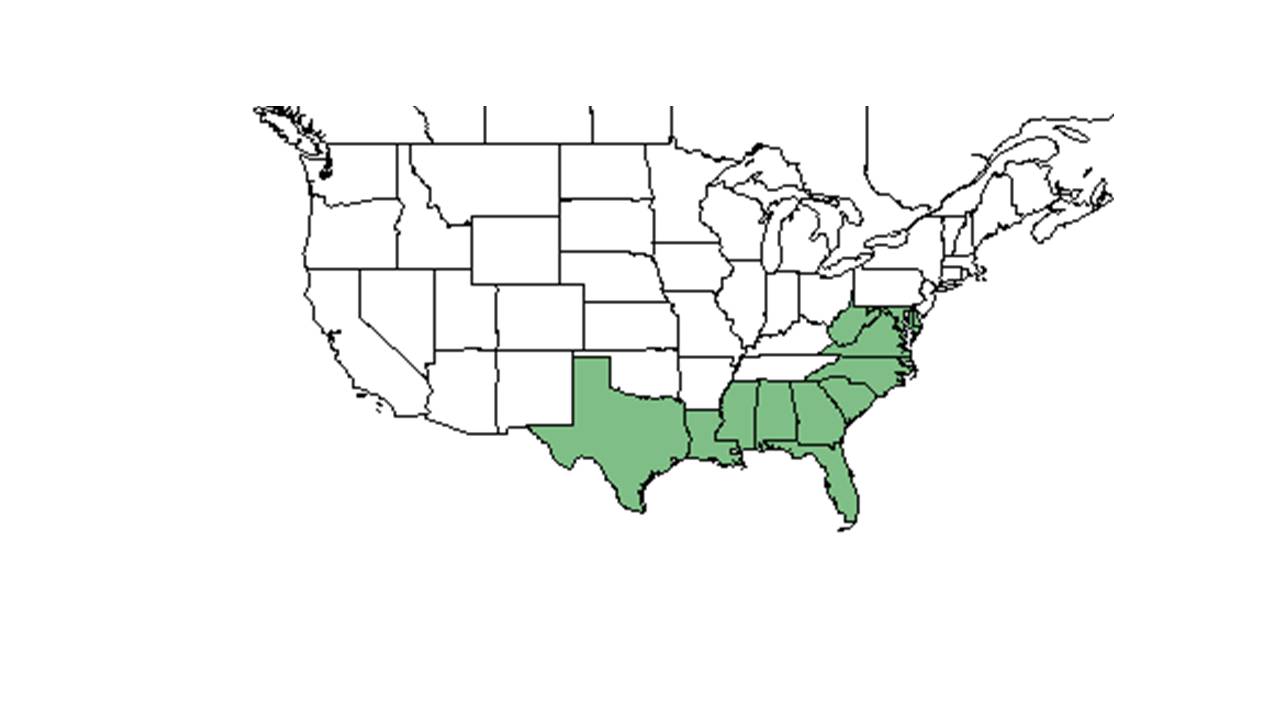Difference between revisions of "Desmodium lineatum"
(→Description) |
(→References and notes) |
||
| Line 63: | Line 63: | ||
NRCS Plants Database http://plants.usda.gov/java/ | NRCS Plants Database http://plants.usda.gov/java/ | ||
| − | |||
| − | |||
Revision as of 09:23, 8 April 2016
| Desmodium lineatum | |
|---|---|

| |
| Photo taken by Kevin Robertson | |
| Scientific classification | |
| Kingdom: | Plantae |
| Division: | Magnoliophyta - Flowering plants |
| Class: | Magnoliopsida – Dicotyledons |
| Order: | Fabales |
| Family: | Fabaceae ⁄ Leguminosae |
| Genus: | Desmodium |
| Species: | D. lineatum |
| Binomial name | |
| Desmodium lineatum DC. | |

| |
| Natural range of Desmodium lineatum from USDA NRCS Plants Database. | |
Common name: Sand ticktrefoil
Contents
Taxonomic notes
Synonyms: Meibomia arenicola Vail; Meibomia polymorpha (A. Gray) Small
Description
Generally, for the Desmodium genus, they are "annual or perennial herbs, shrubs or small trees. Leaves 1-5 foliolate, pinnately 3-foliolate in ours or rarely the uppermost or lowermost 1-foliolate; leaflets entire, usually stipellate; stipules caduceus to persistent, ovate to subulate, foliaceous to setaceous, often striate. Inflorescence terminal and from the upper axils, paniculate or occasionally racemose; pedicel of each papilionaceous flower subtended by a secondary bract or bractlet, the cluster of 1-few flowers subtended by a primary bract. Calyx slightly to conspicuously 2-lipped, the upper lip scarcely bifid, the lower lip 3-dentate; petals pink, roseate, purple, bluish or white; stamens monadelphous or more commonly diadelphous and then 9 and 1. Legume a stipitate loment, the segments 2-many or rarely solitary, usually flattened and densely uncinated-pubescent, separating into 1-seeded, indehiscent segments." [1]
Specifically, for D. lineatum species, they are "perennial with uncinate-pubescent to glabrate, trailing stems, 5-7 dm long. Terminal leaflets ovate, rhombic, ovate or elliptic to orbicular, 0.7-3 cm long, 5-7 dm long. Terminal leaflets ovate, rhombic, obovate or elliptic to orbicular, 0.7-3 cm long, usually about ¾ as wide as long, finely reticulate, both surfaces glabrous or nearly so to densely uncinulate-puberulent and short-pubescent; stipules lance-attenuate to linear-subulate, striate, 2-5 mm long; stipels persistent. Inflorescence paniculate, usually densely uncinulate-puberulent and more sparsely uncinulate-pubescent; pedicels 0.6-1.6 cm long. Calyx densely puberulent and also sparsely short-pubescent; petals purplish, 4-6 mm long; stamens diadelphous. Loment usually of 2-3 segments, each 3.5-6 mm long, 2.5-3.5 mm broad, straight to somewhat curved along the upper suture while broadly rounded below, both sides and sutures very densely uncinulate; stipe longer than calyx tube, about equaling the longest calyx lobe, shorter than the stamina remnants." [1]
Distribution
Found in Alabama, Georgia, Florida, and South Carolina (NRCS Plants Database). It is primarily found in the panhandle and upper peninsular of Florida (ISB Plants Database).
Ecology
Habitat
It is found in frequently burned upland longleaf and shortleaf pine native and old-field communities (Ultisols) (Brewer and Cralle 2003, FSU Herarium), pine-oak sandhills (Entisols), pine flatwoods (Spodosols), and open areas within upland hardwood forests. Thrives in frequently burned (1-2 year fire interval) areas (Gilliam et al 2009, FSU Herbarium). Occurs primarily on sandy soils but can occur on a wide range of soils including sandy loam and sandy clay (FSU Herbarium). It occurs in both full sun and partially shade (FSU Herbarium), but having a prostrate habit it is not tolerant of very dense groundcover vegetation (Robertson observation). It is occurs in both native communities and in areas with a hsitory of soil disturbance (FSU Herbarium, Robertson observation).
Associated species include Desmodium ciliare, D. floridanum, D. ochroleucum, D. rotundifolium, D. laevigatum, Quercus laevis, Pinus elliotti (FSU Herbarium).
Phenology
It flowers and fruits April-November (primarily in autumn) (FSU Herbarium).
Seed dispersal
According to Kay Kirkman, a plant ecologist, this species disperses being carried externally by vertebrates. [2]
Fire ecology
It is associated with frequently burned areas such as pinelands, pine flatwoods, savannas, and mature Longleaf pine-wiregrass uplands (FSU Herbarium).
Conservation and Management
Cultivation and restoration
Photo Gallery
References and notes
Florida State University Robert K. Godfrey Herbarium database. URL: http://herbarium.bio.fsu.edu. Last accessed: June 2014. Collectors: Ed Keppner, Lisa Keppner, Loran C. Anderson, R.K. Godfrey, Gary R. Knight, A. F. Clewell, V. Sullivan, J. Wooten, R. Kral, J. P. Gillespie, Richard S. Mitchell, A.H. Curtiss, Wilson Baker, R. A. Norris, R. Komarek, T. MacClendon, - Boothes, Billie Bailey, William B. Fox, Sidney McDaniel, A. E. Radford, Clarke Hudson, and Michael B. Brooks. States and Counties: Florida: Bay, Calhoun, Citrus, Duval, Franklin, Jackson, Jefferson, Leon, Liberty, Madison, and Wakulla. Georgia: Baker, Grady, and Thomas. Mississippi: Franklin, George, Madison, and Stone. North Carolina: Cumberland. South Carolina: Jasper and Marlboro.
ISB Plants Database http://florida.plantatlas.usf.edu/
NRCS Plants Database http://plants.usda.gov/java/